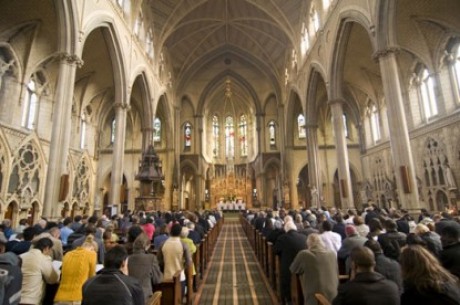While the following article concerns the US, much of what is reported here is reflected in Catholic parish life in Aotearoa New Zealand:
A lot has changed in parish life in a quarter-century, yet American Catholics are still predominantly attached to territorial parishes headed by a priest pastor. The model is being stretched and transformed, however, by tremendous demographic changes in the Catholic population. Church leaders are struggling to keep up.
In the years since we began this series on American Catholic laity, the Catholic population in the United States has increased by more than a fifth. It continues to grow at about 1 percent a year and even conservative estimates project that Catholics will top 100 million by the middle of the 21st century. The Catholic population is becoming more culturally and linguistically diverse as well, influenced by immigration from predominantly Catholic countries around the world.
Catholics are also more dispersed geographically than they were in 1987, continuing a late 20th-century pattern of movement out of the inner cities and into the suburbs, out of the traditional Catholic strongholds in the Northeast and the Upper Midwest and into the rapidly growing Sun Belt cities in the South and the Southwest. An unintended consequence of this growth and migration has been a mismatch between Catholic institutions and Catholic population. While more and more large, once-beautiful urban parishes and elementary schools in the traditional Catholic population centers such as Cleveland and Boston struggle under the burden of too few Catholics to provide financially for their maintenance or to keep them vibrant communities of faith, Catholics in Southern cities such as Atlanta and Fort Worth, Texas, are lobbying their bishops for new parishes and schools to accommodate the growth.
In 1987, there were about 19,600 parishes for 54 million Catholics, or about 2,700 Catholics for every parish. By 2011, the number of parishes had been reduced to about 17,800, a net decline of more than 7 percent. Even though most of the parish mergers and closures occurred in the Northeast and the Upper Midwest, in areas that have lost Catholic population, there has been no corresponding increase in new parishes in the areas of the country that are experiencing the most growth. Thus, the ratio nationally is now more than 3,600 Catholics per parish. Read more
- Source: National Catholic Reporter
- Image: Hispanically Speaking News
News category: Features.




